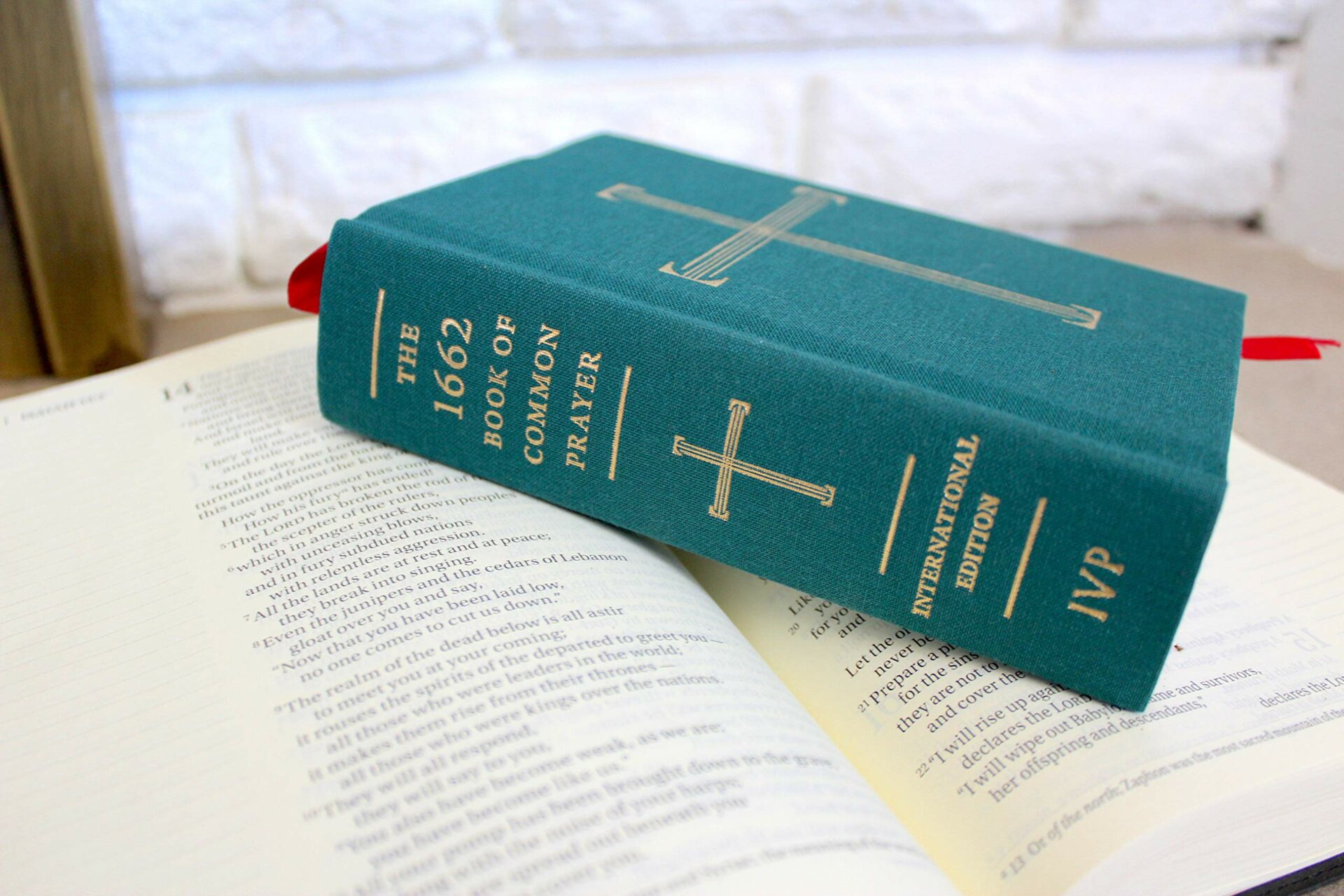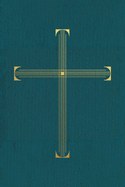Evans, GA. Charles Erlandson has observed that the 1662 Book of Common Prayer (BCP), despite its status as the “official standard of worship and doctrine in the Church of England” and its stated importance in other Anglican provinces around the world, nonetheless suffers from a gap between its ostensible stature and its actual use (108). As he puts it, “The 1662 Prayer book…which both GAFCON [Global Anglican Future Conference] and the ACNA [Anglican Church in North America] portray as a crucial theological norm, is not being used by most within GAFCON or the ACNA” (112). To adapt a saying on classic literature attributed to Mark Twain, the 1662 BCP is a book that everyone praises but no one prays.
Onto this scene of discrepancy between theory and practice arrives IVP’s 1662 Book of Common Prayer: International Edition (IE for short). My own experience with the Anglican Prayer Book tradition is limited—indeed, prior to writing this review, the only BCP I have used regularly is the American 1928. As such, I am not well positioned to explore all of the finer differences between this BCP and other versions, both older and newer. Nevertheless, I will attempt to offer a few reflections about this edition, detailing its distinctives and explaining why, in my judgment, it promises to serve well not only Anglicans, but the contemporary church at large.
It is worth beginning with a few observations about the book as a physical book. I found it to be more compact than I expected. To say it fits in the palm of your hand would be an overstatement, but it is appreciably smaller than the edition of the 1928 I own, making it conveniently portable.
In exchange for this reduced volume, however, the IE is noticeably denser than other BCPs, so prospective buyers should not expect the book to lie flat on its own. Regular use may alleviate this issue over time, though—I myself have already observed that the sections for Morning and Evening Prayer in my copy are more amenable to lying flat than they were initially.
The pages are sturdy without being difficult to turn, achieving a happy medium between the thickness of photo paper on the one hand and tissue paper on the other. The typeface is clear and easy to read, with rubrics printed in red ink. This latter point is significant because the literal meaning of the word “rubric” derives from a Latin word (rubrica) that refers to a writing substance with red coloring, even as other recent BCPs have neglected to maintain this red coloring in their rubrics. There is also a single ribbon for marking pages.
Turning now to the substance of the IE, my first, most striking impression was of the differences between its lectionary and that of the 1928. (To be clear, when I speak of “the 1928 lectionary” in this review I am actually referring to the 1945 lectionary, which replaces the original ’28 lectionary in many later editions of the 1928 BCP, including mine.) Specifically, the 1662 calls for the entire Psalter to be “read through once every month, as it is there appointed both for Morning and Evening Prayer” (xxi). As for the Old Testament and New Testament, one chapter from each is typically read for both Morning and Evening Prayer, such that “the most part thereof [from the Old Testament] will be read every year once,” and the New Testament “shall be read over orderly every year thrice, besides the epistles and gospels” (xxii), with the exception of Revelation.
These instructions for the lectionary sound innocuous enough (quite apart from being nothing new to those more familiar with the BCP tradition). But for someone like me, who was previously acquainted only with the 1928, the change was instantly apparent. While the 1928 lectionary does call for reading through most of the Psalter and much of the OT and NT during the year, some psalms are read several times throughout the year, others are read only once or twice in the entire year, and still others (i.e., some imprecatory psalms) are never read at all. Granted, the 1928 does allow for the Psalter to be read on the 1662 monthly schedule, but this is solely “at [the Minister’s] discretion” (1928 BCP, vii), rather than being the primary—or in the IE’s case, the only—way the psalms are to be read.
Meanwhile, OT and NT readings in the 1928 lectionary typically consist of portions of chapters rather than a given chapter in its entirety. Additionally, it is more common for sections of biblical books to be omitted, and the lectionary often jumps around between different books rather than having a given book be read all the way through once it is begun.
In short, I found the 1662 lectionary far more straightforward and intuitive than the 1928. Every psalm is read every month, and books of the Bible are read from start to finish, chapter by chapter, with omissions occurring only rarely, giving a stronger sense of continuity in the Scripture readings. Naturally, reading multiple psalms and entire Bible chapters during every Morning and Evening Prayer means a great deal more Scripture is being read at a given time than might otherwise be the case. In my view, though, this is a feature rather than a bug.
Another feature of the 1662 that caught my attention is the way in which, even more than the 1928, it reminds people of their sinful nature and the ongoing need to repent. A chief example is the fact that all of the opening sentences of Scripture for both Morning and Evening Prayer are penitential in nature, rather than tracking with the church calendar or offering a more neutral call to worship. Then, too, when the Venite (Psalm 95) is read every day as part of Morning Prayer, the entire psalm is recited rather than Psalm 95:1‒7 and 96:9, 13, as in the 1928. This means that every morning one prays these words: “Today if ye will hear his voice ‒ ‘Harden not your hearts.’” Beginning every Morning and Evening Prayer with such calls to repentance, as well as assurances of forgiveness, is a balm I would not soon relinquish.
Some distinctives of the 1662 are not as apparent within the ordinary rhythms of daily prayer, but they are nevertheless welcome. For example, the Athanasian Creed, which is not found in the 1928, is included here and read on certain feast days. The original 39 Articles are printed in their entirety, whereas they are lightly altered and abbreviated in the 1928 (and, for that matter, all American BCPs). Numerous other features could be mentioned as well, such as the Commination and the Thanksgiving of Women after Childbirth.
At this stage I should pause and acknowledge that most of the things I have praised so far are not unique to the IE, but characterize the 1662 as such. One could therefore ask: why should the IE be purchased, rather than the contemporary Cambridge edition that has existed for some time and is available at a slightly cheaper price?
My answer is that the editors of the IE, Samuel L. Bray and Drew Nathaniel Keane, make clear that they really want people to use this book, even (or especially) if they have no prior experience with the Book of Common Prayer. This is evident in many of the features they include that are not found in the Cambridge edition.
A prime example is the glossary clarifying English terms that are obscure or whose meaning has changed since the 1662 was published. (For my part, I found it enlightening and helpful to learn that confessing myself to be a “miserable” offender means that I am “in need of mercy” [756] rather than feeling unhappy.) On this score, the editors have also engaged in some minor “linguistic updating” (649), e.g., changing Apostolick to apostolic and curates to pastors, to heighten clarity for modern English speakers.
Another good example of the editors’ eagerness to assist newcomers is the page at the very back titled, “How to Follow the Services.” Even if someone wishes to become familiar with the Prayer Book tradition, trying to get the hang of which parts of the book to flip to at what times is, while perhaps not impossible, a daunting prospect on one’s own. This page helpfully lays out how to navigate Morning Prayer, Holy Communion, and Evening Prayer, with numbered steps explaining where and when to find the appointed psalms, lessons, and collects. On top of this, other helpful resources for beginners using this edition of the BCP are collected here, and it would not surprise me if some of these are included in future prints of the IE.
To be clear, though, the editors’ efforts to draw people to the IE are not confined to Prayer Book newcomers. Many long-time Anglicans prefer other versions of the Prayer Book for one reason or another, and Bray and Keane take steps to consider their interests as well. This can be seen, for example, in their inclusion of an alternative lectionary that follows the church calendar rather than the civil calendar, as well as many occasional prayers drawn from BCPs (not least the 1928) that were published after 1662.
One of the editors’ new features I have enjoyed the most, as one somewhat familiar with the Prayer Book tradition, is their “prayers for civil authorities that may be used regardless of nation or polity” (iii). As they explain, “Where the prayer book has prayers for the Queen and the royal family, we substituted prayers from other Anglican prayer books, with modest revisions to keep the prayers from being tied to any one country’s polity” (648).
The obvious benefit is that such prayers can be used by those who are not subject to the British Crown. Valuable as this is, I have also come to appreciate the opportunity to pray for my country in a way that does not assume its leaders are uniformly (or even predominantly) Christian. In using the 1928, every time I pray “A Prayer for The President of the United States and all in Civil Authority” during Evening Prayer, I have done so with some reluctance. This is not because I begrudge the president and other leaders (of whatever party) my prayers, but because I am directed to pray “that they, knowing whose ministers they are, may above all things seek thy honour and glory” (32, emphasis mine).
It may seem like a trivial thing, but the dissonance between what this prayer assumes about America’s leaders and the present reality has often been a source of sorrow to me. In equal measure, then, it has been a source of great comfort for me to have the option to instead pray—after beseeching God’s mercy to “direct and prosper the counsels of all those who bear authority in this land”—“Grant, we pray thee, that religion and piety, peace and unity, truth and justice, may be established among us for all generations” (15, 25). Taking for granted the Christian character of any country is no small assumption in today’s world, unlike when the 1662 was originally published, and I thank the editors for recognizing this and including this prayer from the Ghana 1960 BCP in the IE.
In summary, the IE is essentially the 1662 BCP of old, but unlike the Cambridge edition it is not just that and nothing more—it is the 1662 judiciously tweaked and supplemented in a way calculated to attract both newcomers to the BCP and long-time Anglicans who, for whatever reason, have not already adopted what is still, at least nominally, the official Prayer Book of the Church of England.
These small changes and additions might seem insignificant, but in conjunction with the rich tradition laid down in the 1662 they come together to form an incredible package, a precious foundation and guide for both one’s devotional life and the Christian church more broadly. In light of the IE’s commendable and successful efforts to faithfully preserve the 1662 tradition while making it more accessible to contemporary Christians, we have reason to hope, with Erlandson, that it will be “an integrating force among Anglican churches,” as well as a source of life and hope for all Christians.





